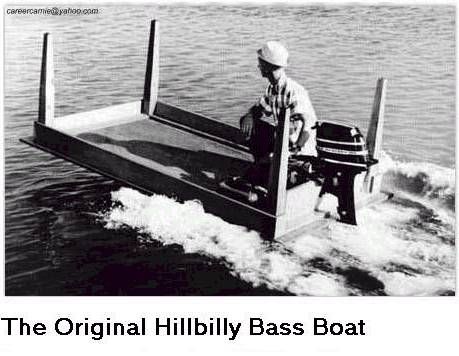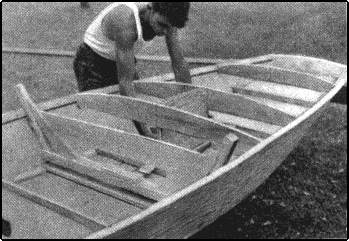| April, 2001
From Hans Zwakenberg [email protected]
Hi,
The next version of HullDrag/32
will use a new - and extended - module to
estimate the increase of wetted area when a hull is heeling.
I've whipped up a small utility, see the attached HEELING.ZIP,
that allows you to test this new
module. I would be very grateful indeed for some
feedback on how it works for you. HEELING.EXE
estimates the increase of wetted area for a hull heeling between
5 degrees and 35 degrees (in 5 degrees intervals). It reads the
standard HullDrag/32 ZVF-files you're using
already. It doesn't write back anything
- as HullDrag/32 does- , so you can use your current data
files without fear of overwriting any information.
Please note that the definition of the ZVF-file is
extended a bit by adding a new variable
in the section that describes the hull geometry. It's
called 'Cm', for 'cross sectional area coefficient'.
If you choose not to provide Cm, HEELING.EXE
calculates its own estimate of Cm,
based on volume displacement, Lwl, Bwl, Tc and prismatic.
I've included four ZVF-files to play with,
describing four very different vessels:
- Mini650
- Mount Gay 30
- 40' cruiser-racer
- Americas Cup 92 Challenge Australia
Why this new module?
The HullDrag version you're using right now
calculates an estimate of the added
resistance due to heel using a single formula that combines
both the viscous and residuary resistance. (See
'Principles of Yacht Design', page 83).
HullDrag's new approach will be to separately calculate
the viscous and residuary drag components in order to get more
accurate results for a wide range of hull shapes.
Thanks for your help! Let's bring HullDrag/32 one
step further.
Cheers,
Hans.
Download
HullDrag/32
Download
Heeling.zip
|
April, 2001
Chuck:
I enjoyed John Welsford's article on camping and thought that I'd pass
on a tip for a wanagan or camp box.
A wanagan is the box for kitchen gear and food for canoe trips.
Originally, I think that a wanagan was the floating kitchen which
followed log rafts on log drives downriver.
For several years, I have used a footlocker which I have waterproofed
and sealed for a wanagan. Here's how I do it. Buy a
footlocker at Wallmart, K-Mart or an army surplus store. Garage
and yard sales are other great places to look. I have a small
one that will fit between the gunnels of my canoe and a larger one
that fits between the thwarts lengthwise.
Paint the inside and outside of the locker with polyurethane or epoxy
to waterproof it. I've used both and they work equally well,
although it takes some time for the polyurethane odor to wear off.
I suppose that you could even use exterior house paint.
Next, run a bead of silicone caulk around the rim of the locker.
There is usually a strip of metal with a channel around the rim of the
locker where the lid fits on. Put a bead of caulk in this
channel and allow it to dry.
Now you have an almost completely waterproof wanagan. Mine
floats and ships no water. You can leave it out in the rain and
it's raccoon proof. Mine has even withstood the curiosity of a
(small) black bear. You can attach shoulder straps to make it
easier to portage - Although I just tie a trump line to one of the
handles and use my pfd for padding. I've always meant to paint a
chess board on the thing, but have not gotten around to it.
Regards
Andy Farquhar
|
| April, 2001
This made me laugh! Gavin Atkin:

Nah, the original didn't have them pantywaist
four-poster bimini supports. That there is a dee-lux model, the
kind you use in the cee-ment pond! - Lew Clayman
|
April, 2001
Hi, Chuck,
I'm entering my fifth year of supplying inexpensive white polytarp
sail kits to low-budget boatbuilders, families, schools, scout troops,
and clubs of all kinds. This year I've started to get considerable
feedback on the performance of taped, white polytarp sails. Over the
last two years, I've surveyed all my PolySail Kit customers to get
feedback on our product and service. The response from these mailings
has been excellent with over 30% of my customers responding. It seems
folks are building or restoring all kinds of boats and fitting them
out with PolySails--and liking their performance.
I posted the survey and a number of the responses about sail
performance on my website at Form
survey letter2 If the results appear to be positively
biased, it's because I have yet to receive any surveys back from
customers that were slanted toward the negative. There was one comment
about the vinyl tape loosening over time and a couple of indications
that sail construction took longer than expected, but even those
minor problems were offset with all positive responses to the rest of
the questions on those particular surveys.
In response to those concerns that have surfaced, I have tested
several different tapes (see the tape test page on my website), but I
haven't come up with better, low-cost tapes to replace those we are
presently using. Construction time is linked to the size and
number of sails being constructed. There appeared to be lots of
variation here because most of my customers are first-time sailmakers,
but there have been no complaints at all about the service,
instructions, or the finished sail performance. In the
five years I've offered these kits, I've received one report of a
problem with the material, and that customer blamed himself for the
problem, refusing the offer of a free replacement kit.
I was surprised by the number of people who were using the kits to
make multiple sails. For example, one shop teacher ordered one large
kit to make several pram sails for student projects. In most cases,
however, a single builder used the kit to build both main and jib. A
few customers were using these sails to power boats in the 20' range.
That's about the limit that we recommend. I'd be very interested to
learn how these sails hold up on the larger craft.
It was gratifying to receive such positive responses from customers.
I've also received a number of positive responses from people who have
used the instructions on my website for building tarp sails from the
less durable colored tarps that are widely available. I've yet to make
a profitable business from this part-time venture, so those responses
are all important to me in terms of continuing to invest time and
money in inventory, operations, and maintaining a website.
Because this venture all started from a father-son project, I am
always especially pleased to hear from other dads and moms who have
built PolySails to get their projects and kids out on the water. To
continue to encourage parents to spend time with their kids in
boatbuilding projects--and to encourage boatbuilding in general--I've
posted some old, but still viable, study plans on my Old
Boats-Treasures from the 40's page. There are now about 13 boats
listed with plans. Here are a couple of pages from the plans for a
nifty little 10' scow that looks like it would make a great little
easy-to-build family project.

Boatbuilders
who might like to check out these free plans can click on the link on
my home page or go directly to the site at: oldboats
With
help from guys like you and the many links to others of similar
interest that the web allows us, I think amateur boatbuilding has a
great future. We know how satisfying the creative process is for
adults by the number of sites that show both finished projects and
works in process. As a parent and former teacher, I look forward to
reading some articles about the building process as a teaching and
learning tool for our kids as well.
Regards,
Dave Gray
|
April, 2001
Hi,
This morning, I put HullDrag/32 rel. 0.51(beta) on my website
for you to download freely. This maintenance release doesn't extend
the calculation engine in any way. The main improvements are: - more
meaningful error messages, you have been asking for this a lot...
Recently, I switched to another ANSI-C development environment.
As a result of this, the ZIP-download shrunk from an already compact
64 kilobytes to a very meagre 23 kilobytes.
As of now, I'm working on version 0.6beta, which will finally include
the long awaited Lcf optimisation and which will extend the
optimisation speed range from Fn=0.45 to Fn=0.6.
0.6beta will still remain a Win32 console mode application, meaning
that you have to run it in a DOS/CMD-box.
After releasing 0.6b (and getting it stable) I will continue with 0.7,
which will sport a Windows graphical user interface.
Enjoy,
Hans Zwakenberg
+++ Get the latest HullDrag/32 now at https://www.zwakenberg.de/hulldrag/+++
|
|
|
![]()